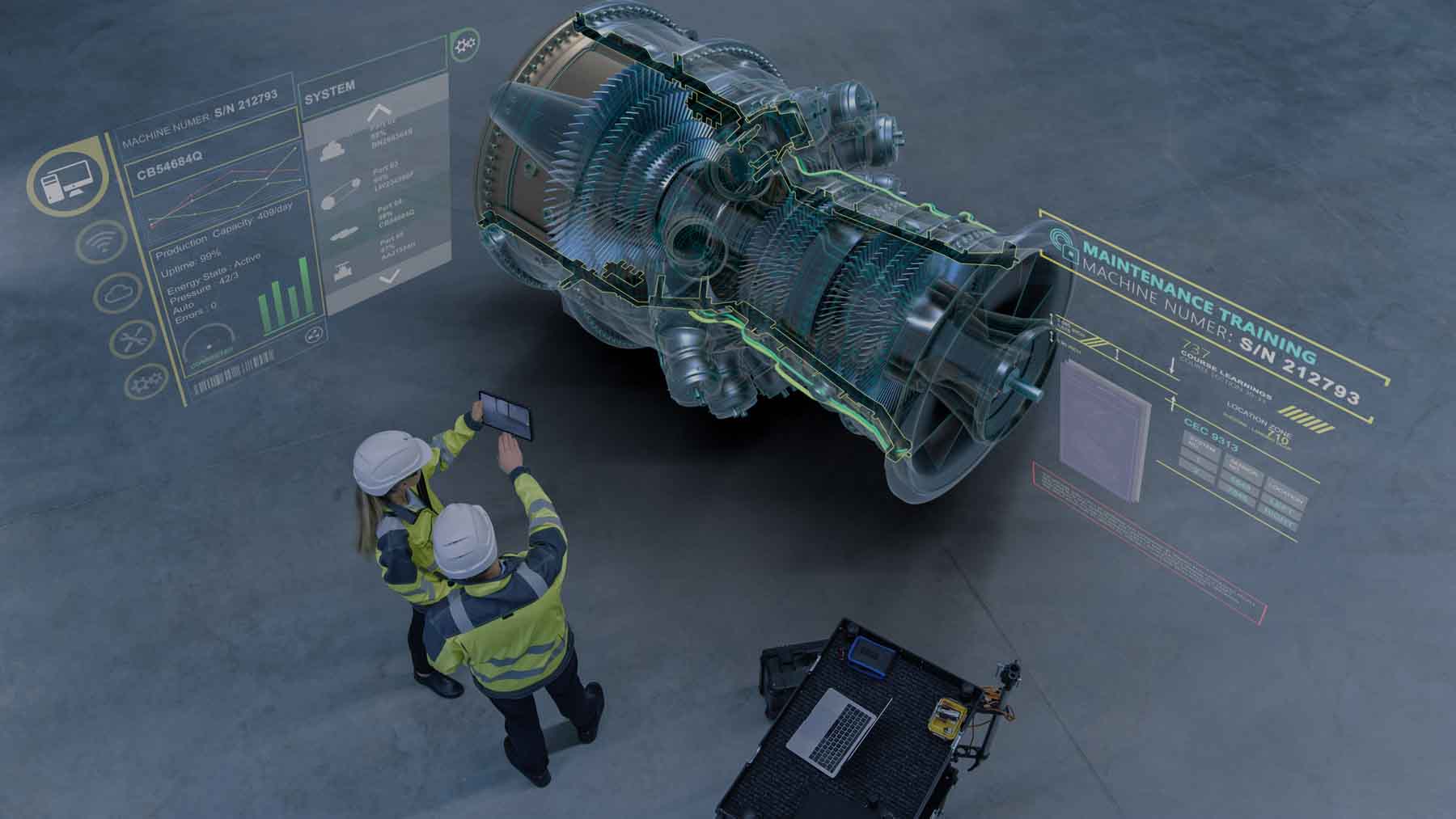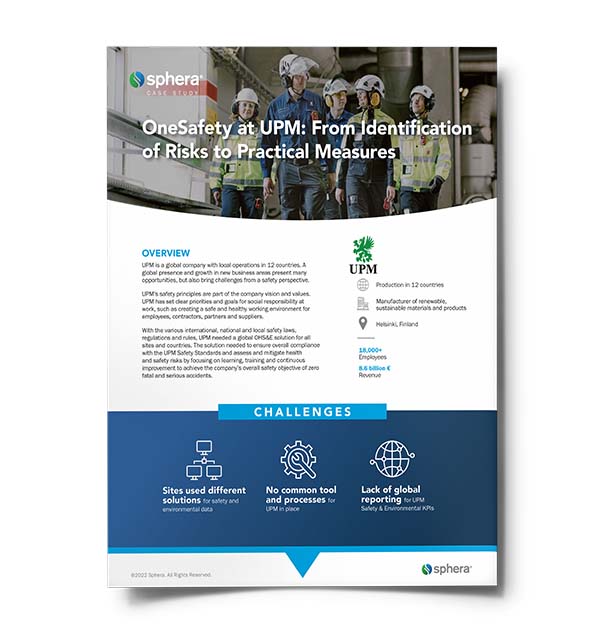Safety culture in the workplace reflects how much focus the organization places on safety. Traditional, top-down regulation, bureaucracy and management are necessary. Yet the challenge for many companies today is to evolve toward an integrated safety culture, where the rules are adopted and internalized throughout the workforce.
It’s no secret that digitalization serves to connect employees and can improve efficiency and productivity. Here, we look at how using digital tools can engage employees and influence attitudes, processes and habits to strengthen the safety culture.

What Is Safety Culture?
The Institute for Industrial Safety Culture (ICSI) defines safety culture as “a set of ways of doing and thinking that is widely shared by the employees of an organization in the context of managing the most significant risks associated with its activities.” One popular definition of safety culture is: “how people in the company behave when no one is looking.”
A company’s safety culture generally relies on three pillars of safety management: formal rules and processes; technical factors, such as facility design; and human and organizational factors, which include support for safe behavior at work.
In 1986, two large-scale incidents advanced the idea of safety culture: the explosion of the Challenger space shuttle in the U.S. and the disaster at the Chernobyl nuclear power plant in Ukraine. According to the ICSI, both incidents resulted from “a gradual accumulation of failures within the organization which had weakened all of the protective barriers.” This pointed to the need for a more holistic approach to ensuring safe behaviors.
How Can Digitalization Improve Safety Culture?
For companies looking to improve safety culture, the ICSI advises that “the greatest scope for progress resides in human and organizational factors.” Technology is key to bringing about change. A digital system can serve to overcome limiting mindsets, processes and habits to move behavior in the right direction.
1. Improve mindset.
As time goes by, employees can get stuck in a rut of doing things a certain way. A fresh style of leadership that incorporates digital technology can bring about culture change in the organization. Here are two examples.
First, long-time employees might just be “pencil whipping”—in other words, signing off duties routinely without certifying that tasks have been completed. Yet when a new, digital procedure is introduced, the same employees tend to go through the steps more carefully. They pay attention because the interfaces and procedures are different.
Second, at some facilities, the ground-level workers may get into a mindset of “injuries come with the job.” But supervisors and safety teams who have access to a digital system can more quickly identify when people are not performing tasks, such as permitting, correctly or consistently. By finding out where unsafe behavior occurs, supervisors can address attitudes and behaviors with relevant employees.
From a leadership perspective, the system provides a set of guardrails that guides behaviors in the right direction for safety areas including barrier management, permit to work, management of change, incident management, risk assessments and process safety management. Employee mindsets adjust to be more attentive, and workers perform their tasks more safely.
2. Improve processes.
Every day, managers and workers must balance various aspects of their jobs, such as cost versus lead times or, critically, speed over safety. They may believe that being safe means being less productive. Yet the opposite is the case. Through digitalization, companies can:
- Erect process guardrails for workers. Complex tasks often take place near each other, for example, working at heights in a confined space with a pipe fabrication job happening below the maintenance crew. While trained employees understand the requirements of each of these jobs individually, if they happen simultaneously, even a trained eye can easily miss a requirement that is meant to keep workers safe. A digital safe system of work will automatically generate and adjust necessary documents, reducing the chances of human error or oversight.
- Boost productivity. Preventing incidents can save millions of dollars in downtime and loss of reputation. With health and safety management software, workers can easily record unsafe acts, incidents and accidents. Reporting becomes more accurate, which aids any incident investigation.
- Simplify incident reporting. Once an incident is recorded, the company, supervisors and employees all have more accurate data. Typically, more incidents get recorded with a digitized system than with a paper system. This raises awareness—and pressure—to bring about real change in processes to ensure safety.
- Be proactive. Advanced software tools build workflows to capture, track, investigate, report and analyze health and safety information. Accurate recording of the incidents gives companies a starting point for proactive measures to prevent further events. Digital incident reports are also easier to copy, archive and retrieve compared to paper records.
3. Improve habits.
Some workers might tell themselves that safety is somebody else’s job. While bureaucratic, rule-based health and safety systems such as barriers or lockout/tagout (LOTO) are necessary, with a digital system, everyone actively takes on responsibility for their own safety. Through cloud technology, key safety information can be accessed via desktop web applications and mobile devices for use in the field.
The device is always at hand, and digital systems can enforce correct habits everywhere on site. Everyone can immediately access work orders and permits to quickly reference essential information. Mobile GPS tracking can confirm that activities are occurring in the correct location. Additionally, with digital tools, companies can leverage integrations to converge standard work practices. Rather than having to copy information from a work order to a permit, fields can be automated to make writing a permit quicker and easier.
With digitalization, managers have access to more information and can see all the other jobs going on. They gain the visibility they need to balance safety with productivity so that neither is compromised. Significantly, a digital system alerts them to conflicts, such as when the current job will overlap with others that are scheduled to begin within the hour.
How to Promote a Culture of Safety in the Workplace
Technology can help connect the dots across the organization to reduce the gap between process safety intent and its reality—what is happening and what should happen. Safety professionals know that reactive indicators such as total recordable incident rate (TRIR) are not enough. They know that digital tools can help them move from reactive to proactive risk management.
In Sphera’s Safety Report 2022, nearly all respondents (96%) state that technology is helping or has the potential to help enable effective process safety and operational risk management. This helps companies control the most significant risks to prevent serious incidents and fatal accidents. Indeed, the “least probable” accidents, so-called Black Swan events, often present the highest threats.
A commitment to safety serves to reduce major incidents, incorporate operational ESG, boost productivity, build a good reputation and even attract new talent. Candidates are likely to prefer companies with a good safety record, knowing that they are protected from harm. At every level, a strong safety culture supported by digitalization creates a strategic lever for improving the company’s overall performance.
In short, promoting a culture of safety relies on shared risk awareness and proactive measures. Digital tools provide the guardrails to help improve attitudes, processes and habits related to risk. With an integrated safety culture, organizations are better able to prevent a gradual accumulation of failures that can weaken existing protective barriers.











